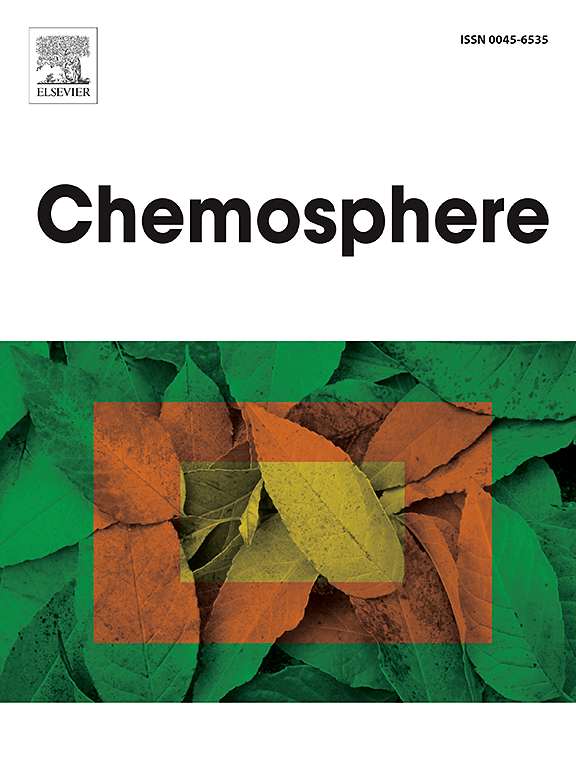Valorization of waste pistachio shells to bimetallic magnetic hydrochar for sustainable dual-action wastewater remediation: A comprehensive study with mechanistic insights and life cycle assessment
IF 8.1
2区 环境科学与生态学
Q1 ENVIRONMENTAL SCIENCES
引用次数: 0
Abstract
This research outlines an integrated experimental and theoretical strategy for converting Pistachio-shells by hydrothermal carbonization into a bimetallic magnetic hydrochar (BMHC), for effective adsorptive-degradation of organic pollutants. Environmental sustainability of BMHC is supported by life cycle assessment(LCA). Adsorption experiments showed rapid and efficient dye (MB, CV) and antibiotic (TC) removal within 50 min, with >97% efficiency. The catalytic properties of BMHC, facilitated Peroxymonosulfate (PMS)-driven complete degradation of targeted contaminants, through ROS generation. DFT calculations demonstrated the regioselectivity for targeted moieties. The degradation intermediates were identified by LCMS and possible degradation pathways were derived. In-silico toxicity assessment of these intermediates confirmed the process safety. Employing 'Hook and Destroy' approach, BMHC demonstrated magnetic separation and reusability over five cycles. This extensive research demonstrates waste-to-resource conversion of Pistachio-shells to BMHC, with dual functionality in adsorption and degradation, as well as magnetic recoverability, which advocates its potency for water treatment solutions.

废弃开心果壳转化为双金属磁性碳氢化合物的可持续双作用废水修复:一项具有机理见解和生命周期评估的综合研究
本研究概述了通过水热碳化将开心果壳转化为双金属磁性碳氢化合物(BMHC)以有效吸附降解有机污染物的综合实验和理论策略。生命周期评价(LCA)支持了BMHC的环境可持续性。吸附实验表明,在50 min内快速有效地去除染料(MB, CV)和抗生素(TC),效率达97%。BMHC的催化性能,促进了PMS驱动的目标污染物的完全降解,通过生成活性氧。DFT计算证明了目标部分的区域选择性。利用LCMS鉴定了降解中间体,并推导了可能的降解途径。这些中间体的硅毒性评估证实了该工艺的安全性。采用“Hook and Destroy”方法,BMHC在五个循环中演示了磁分离和可重用性。这项广泛的研究表明,开心果壳可将废物转化为资源,并具有吸附和降解的双重功能,以及磁可回收性,这表明其在水处理解决方案中的潜力。
本文章由计算机程序翻译,如有差异,请以英文原文为准。
求助全文
约1分钟内获得全文
求助全文
来源期刊

Chemosphere
环境科学-环境科学
CiteScore
15.80
自引率
8.00%
发文量
4975
审稿时长
3.4 months
期刊介绍:
Chemosphere, being an international multidisciplinary journal, is dedicated to publishing original communications and review articles on chemicals in the environment. The scope covers a wide range of topics, including the identification, quantification, behavior, fate, toxicology, treatment, and remediation of chemicals in the bio-, hydro-, litho-, and atmosphere, ensuring the broad dissemination of research in this field.
 求助内容:
求助内容: 应助结果提醒方式:
应助结果提醒方式:


